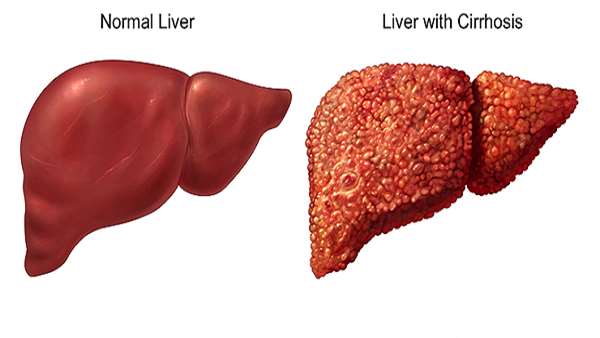Combo Cell Therapy Promotes Healing of Cirrhosis-Damaged Liver
A study recently published in STEM CELLS Translational Medicine(SCTM) describes a new cell therapy that shows promise in treating cirrhosis of the liver. The treatment, combination of mesenchymal stem cells and induced bone marrow-derived macrophages, reduced fibrosis and promoted regeneration of cirrhosis-damaged liver in tests on mice.
A study recently published in STEM CELLS Translational Medicine(SCTM) describes a new cell therapy that shows promise in treating cirrhosis of the liver. The treatment, combination of mesenchymal stem cells and induced bone marrow-derived macrophages, reduced fibrosis and promoted regeneration of cirrhosis-damaged liver in tests on mice.
Cirrhosis is a condition in which the liver is scarred and permanently damaged, preventing it from functioning normally. Causes include alcoholic liver disease, nonalcoholic fatty liver disease, chronic hepatitis C and chronic hepatitis B. Currently no cure is available, although treating the underlying causes may keep it from progressing to the point of liver failure. Still, by the year 2020, cirrhosis is expected to be the 12th leading cause of death worldwide, according to the World Gastroenterology Organization.
“Thus, the development of novel therapeutic approaches for liver fibrosis regression and regeneration is urgently needed,” said Professor Shuji Terai, M.D., Ph.D., of Niigata University’s (NU) Graduate School of Medical and Dental Sciences. Prof. Terai is a lead investigator on the study along with his NU colleagues Yusuke Watanabe, M.D., and Atsunori Tsuchiya, M.D., Ph.D.
In the study released in SCTM, Prof. Terai’s team, which also included researchers from the University of Edinburgh and Osaka University, focused on two cell types: bone marrow-derived mesenchymal stem cells (MSCs) and induced bone marrow-derived macrophages (iBMMs), previously reported to be effective for cirrhosis.
“Since 2003, autologous bone marrow cell infusion therapy, which improves liver fibrosis and induces liver regeneration, has been applied in experimental clinical studies for cirrhosis (Terai S et al. STEM CELLS. 2006 Oct;24(10):2292-8). However, many fundamental issues for cell therapy in this context require further study,” Dr. Watanabe said. “Because cell therapy involves multiple factors, this leads to difficulty in analyzing mechanisms. In this study, we focused on these unresolved points.”
The team began by culturing MSCs and iBMMs from mouse bone marrow and analyzing their interactions in vitro. Next, mice with induced cirrhosis were divided into groups with one administered MSCs, another given iBMMs and the third group treated with the combo MSC/iBMM therapy. The three groups were then evaluated for fibrosis regression, liver regeneration and liver-migrating host cells.
“The results showed that the combination therapy with the two cell types synergistically improves liver function and fibrosis over monotherapy using MSCs or iBMMs alone, in part by enhancing host endogenous regenerative responses,” reported Dr. Tsuchiya.
“We also for the first time succeeded in tracing the detailed behavior of administered cells in the liver by intravital imaging technology,” he added. “These studies pave the way for new treatments for cirrhosis.”
“The development of novel therapeutic approaches for liver fibrosis regression and regeneration is urgently needed to someday treat this life-threatening condition,” said Anthony Atala M.D., Editor-in-Chief of STEM CELLS Translational Medicine and director of the Wake Forest Institute of Regenerative Medicine. “The combined therapeutic approach tested in this study paves the way for new treatments.”
Reference:https://stemcellsjournals.onlinelibrary.wiley.com/doi/full/10.1002/sctm.18-0105





ارسال به دوستان